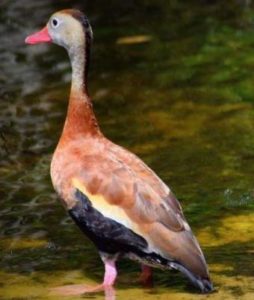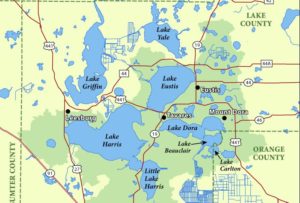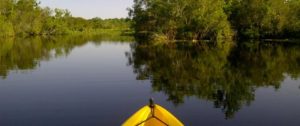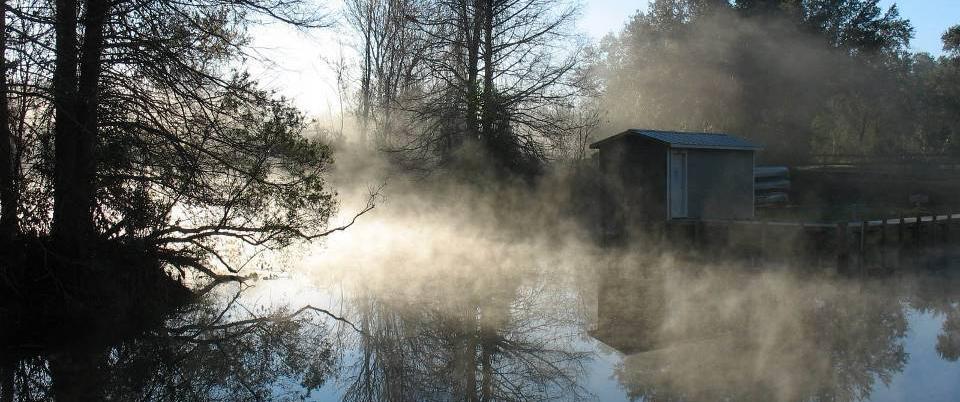The Harris Chain, with its tens of thousands of acres of lakes and wetlands, represents the headwaters of the Ocklawaha River, the major river draining central Florida.
Besides their ecological value, the Harris Chain has considerable economic value in the tourism-driven economy.
 Now, that economic value has been greatly increased, thanks to local ecological restoration efforts that have boosted the fish population.
Now, that economic value has been greatly increased, thanks to local ecological restoration efforts that have boosted the fish population.
This success has been recognized in the June/July issue of the national magazine, Field & Stream as one of “The 50 Best New Fishing Spots in America.”
“This is obviously a huge feather in our cap, if you will, and it can only help our overall mission, which is to continue to restore the lakes,” said Sid Grow, chairman of the Harris Chain of Lakes Restoration Council.
“People will see this and say, ‘Hey, let’s go visit and fish there in Central Florida.’ That helps recognize all of the work we’ve put in to conserve and restore the (Harris) Chain,” he added.
 Lakes such as Lake Beauclaire, Lake Dora, Lake Eustis, Lake Griffin, Lake Harris and Lake Yale—with their attractive natural resources—provide tourists and the citizens of Florida with diverse recreational activities. Many citizens also reside along the shores of these lakes, representing a major real estate market.
Lakes such as Lake Beauclaire, Lake Dora, Lake Eustis, Lake Griffin, Lake Harris and Lake Yale—with their attractive natural resources—provide tourists and the citizens of Florida with diverse recreational activities. Many citizens also reside along the shores of these lakes, representing a major real estate market.
The Harris Chain of Lakes Restoration Council was officially created by action of the Florida Legislature in 2001. The Council consists of nine voting members representing a broad spectrum of individuals with diverse expertise and interests.
It’s responsible for evaluating lake restoration techniques and the sport fish population recovery strategies.
 This includes shoreline restoration, sediment control and removal, exotic species management, floating tussock management or removal, navigation, water quality,and fish and wildlife.
This includes shoreline restoration, sediment control and removal, exotic species management, floating tussock management or removal, navigation, water quality,and fish and wildlife.
“Our favorite conservation stories are the grass-roots efforts, and that’s exactly what you have there with the Harris Chain,” says Colin Kearns, editor-in-chief of Field & Stream.
He explained that the rebounding of the Harris Chain of Lakes over the last quarter-century played a major role in its recognition as one of the top fishing spots in the nation.
“The local anglers and residents getting out there and getting dirty to help work back an area to fish again is extremely admirable. Bringing the Harris Chain of Lakes back from the dead, for lack of a better term, that type of teamwork and effort is massive — and it deserves major recognition,” Kearns concluded.
 The official mission statement of the Harris Chain of Lakes Restoration Council is “to maximize successful restoration of the Harris Chain of Lakes, by ensuring sensible efforts to restore clean water quality, sound environmental policy, ecological diversity, and economic stability, now and into the future.”
The official mission statement of the Harris Chain of Lakes Restoration Council is “to maximize successful restoration of the Harris Chain of Lakes, by ensuring sensible efforts to restore clean water quality, sound environmental policy, ecological diversity, and economic stability, now and into the future.”
Specifically, that means:
- To keep the citizens of Florida first, while performing their fiduciary responsibility, and do so with great urgency;
- To recommend lasting and viable solutions to the legislature for appropriations of funds and resources;
- To recommend projects that will be selected based on the ability to achieve restoration goals, sound science and prudent restoration philosophy;
- To restore the Harris Chain of Lakes water quality to nothing less than pristine is our goal and our mission;
- To develop a program for the improvement of the fish and wildlife habitat and natural systems of the Harris Chain of Lakes;
- To propose methods of contaminated sediment removal and control nutrient loading to our lakes;
- To evaluate and identify areas of human health concerns, resulting from the deterioration of our lakes; and
- To recommend and develop projects that substantially improve the economic benefit to the local communities.
Photos of Lake Griffin courtesy of Florida State Parks.

